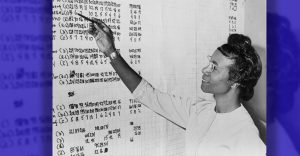Activism
The Black New Deal
Across the entire county, Black Americans have been crying out for specific data on the impacts of the coronavirus on their communities due to high rates of contraction and mortality.
In Oakland, coalition of Black-led organizations was convened to address the disproportionate impacts of COVID-19 and its evisceration of the Black community.
The resulting effort is The Black New Deal, a platform of short, mid and long-range goals crafted to address the immediate needs of Oakland’s Black residents.
Black New Deal advocates are requesting, amongst a suite of other equity shifts, that the Oakland Unified School District Board of Trustees and the City of Oakland work together to provide internet access and computers to OUSD students who do not have this privilege.
In addition, the Black New Deal advocates for deeper investment from the County of Alameda to:
• Provide free testing for all of Oakland’s 400,000 citizens;
• Utilize FEMA funds to immediately shelter every unhoused person in hotels;
• Release all Black people incarcerated in Alameda County, and upon their release they be tested, provided with medical care, housing, and other services by through funding to community organizations
The Black New Deal, which is also moving in Sacramento and Los Angeles is already having an impact in Oakland as legislators are making changes to address the platform demands.
“President Roosevelt’s New Deal, the programs and reforms enacted to stabilize the United States during the Great Depression, left Black Americans out of the recovery and in many ways, exacerbated existing racist injustices and state-sanctioned discrimination,” said Carroll Fife, director of the Alliance of Californians for Community Empowerment (ACCE). “It deepened the divide between white and Black Americans in areas of educational achievement, job quality and a living wage, and access to safe and affordable housing. As a result, the Black New Deal was created for those left behind by the first New Deal as a way to say, never again.”
According to Fife, “We have to do more than just say Black people are dying disproportionately from the coronavirus. We must dig deep into the why and do the work to change the systems that are killing us. We must also change the narrative: we are not just dying of a disease, we are dying because of structural racism and benign neglect.”
“My goal is for Black people to know it’s OK to center Black health and wellness,” Fife said.
Fife urges community members to find its own solutions for the challenges here and create their own systems to take care of each other. The self- love and desire for the ‘best good’ does not mean that African Americans in Alameda County don’t want the same for others.
“Our blood, sweat and tears have fertilized the ground in America and we are still fighting for space and equity,” Fife said. “It is our responsibility to build our people, and we should also hold accountable those in positions to affect our lives to do their part.
If this pandemic is an emergency, we should act like it and move with urgency to halt the existing trend of Black disposability and do everything in our power to right the wrongs of history so we do not continue to duplicate its failures.
Activism
Oakland Post: Week of November 26 – December 2, 2025
The printed Weekly Edition of the Oakland Post: Week of November 26 – December 2, 2025
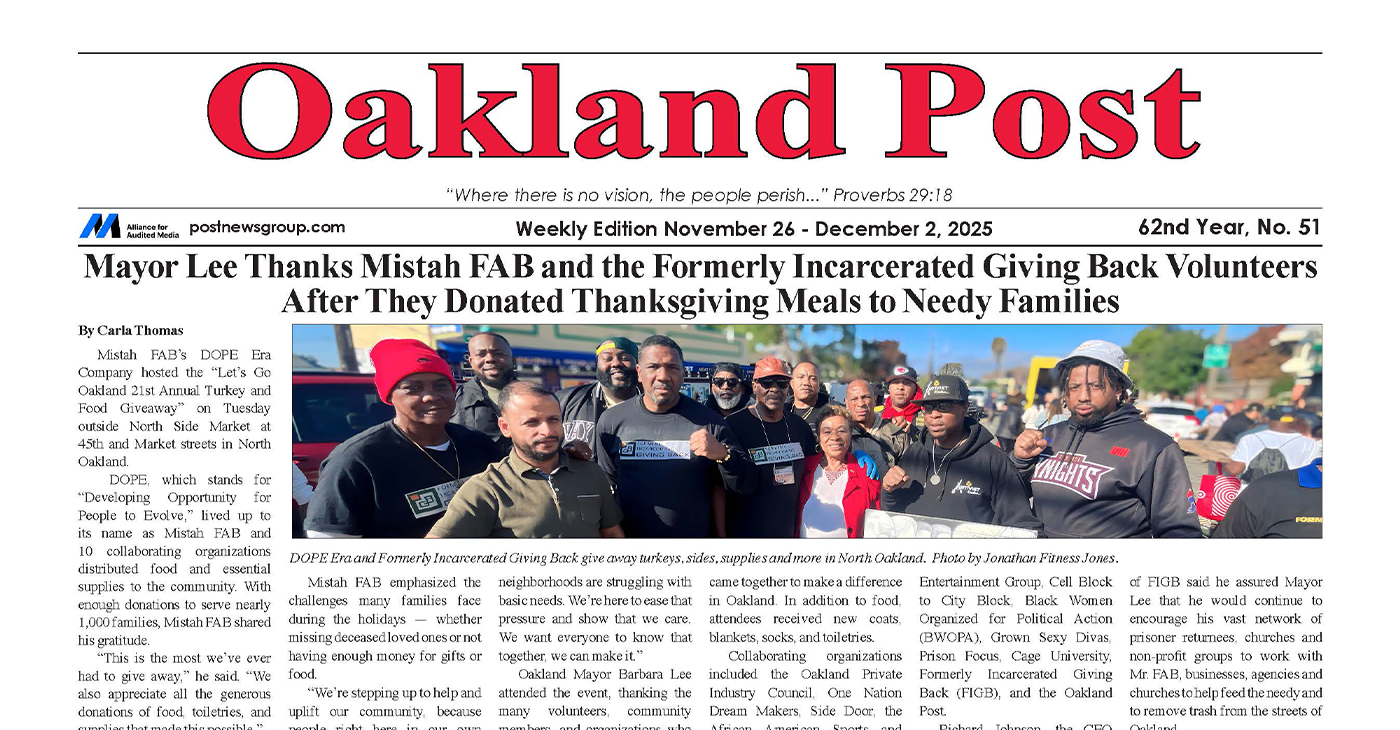
To enlarge your view of this issue, use the slider, magnifying glass icon or full page icon in the lower right corner of the browser window.
Activism
Oakland Post: Week of November 19 – 25, 2025
The printed Weekly Edition of the Oakland Post: Week of November 19 – 25, 2025
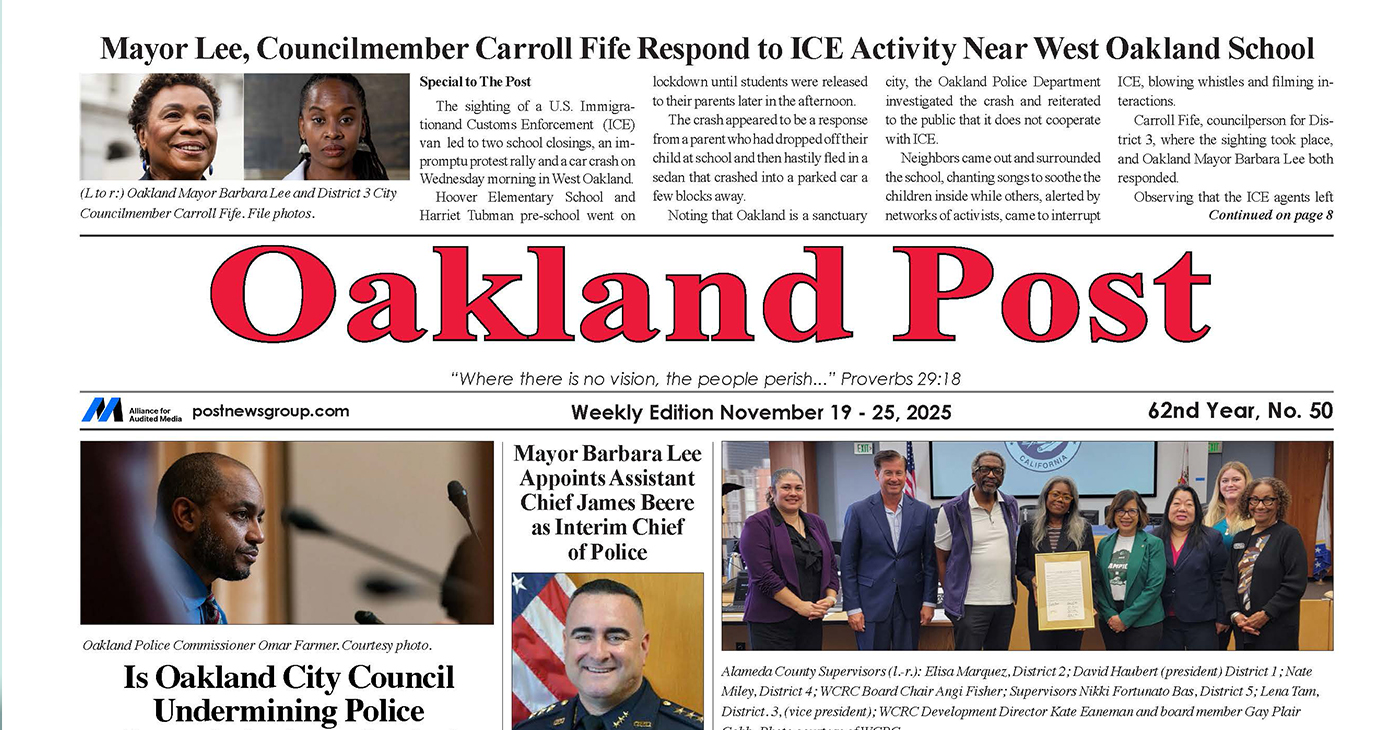
To enlarge your view of this issue, use the slider, magnifying glass icon or full page icon in the lower right corner of the browser window.
Activism
IN MEMORIAM: William ‘Bill’ Patterson, 94
Bill devoted his life to public service and education. In 1971, he became the founding director for the Peralta Community College Foundation, he also became an administrator for Oakland Parks and Recreation overseeing 23 recreation centers, the Oakland Zoo, Children’s Fairyland, Lake Merritt, and the Henry J. Kaiser Convention Center.
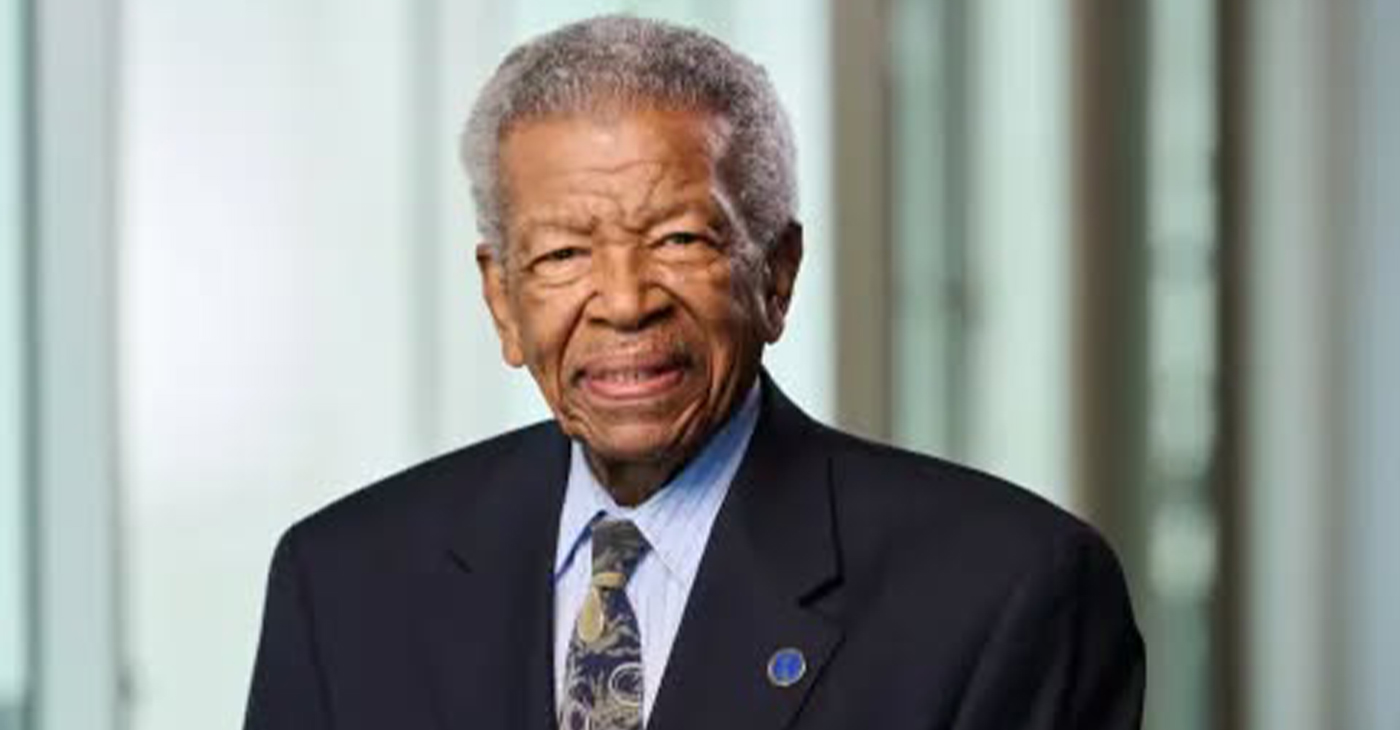
William “Bill” Patterson, 94, of Little Rock, Arkansas, passed away peacefully on October 21, 2025, at his home in Oakland, CA. He was born on May 19, 1931, to Marie Childress Patterson and William Benjamin Patterson in Little Rock, Arkansas. He graduated from Dunbar High School and traveled to Oakland, California, in 1948. William Patterson graduated from San Francisco State University, earning both graduate and undergraduate degrees. He married Euradell “Dell” Patterson in 1961. Bill lovingly took care of his wife, Dell, until she died in 2020.
Bill devoted his life to public service and education. In 1971, he became the founding director for the Peralta Community College Foundation, he also became an administrator for Oakland Parks and Recreation overseeing 23 recreation centers, the Oakland Zoo, Children’s Fairyland, Lake Merritt, and the Henry J. Kaiser Convention Center.
He served on the boards of Oakland’s Urban Strategies Council, the Oakland Public Ethics Commission, and the Oakland Workforce Development Board.
He was a three-term president of the Oakland branch of the NAACP.
Bill was initiated in the Gamma Alpha chapter of Kappa Alpha Psi Fraternity.
In 1997 Bill was appointed to the East Bay Utility District Board of Directors. William Patterson was the first African American Board President and served the board for 27 years.
Bill’s impact reached far beyond his various important and impactful positions.
Bill mentored politicians, athletes and young people. Among those he mentored and advised are legends Joe Morgan, Bill Russell, Frank Robinson, Curt Flood, and Lionel Wilson to name a few.
He is survived by his son, William David Patterson, and one sister, Sarah Ann Strickland, and a host of other family members and friends.
A celebration of life service will take place at Henry J. Kaiser Convention Center (Calvin Simmons Theater) on November 21, 2025, at 10 AM.
His services are being livestreamed at: https://www.facebook.com/events/1250167107131991/
In lieu of flowers, donations can be made to the Euradell and William Patterson scholarship fund TBA.
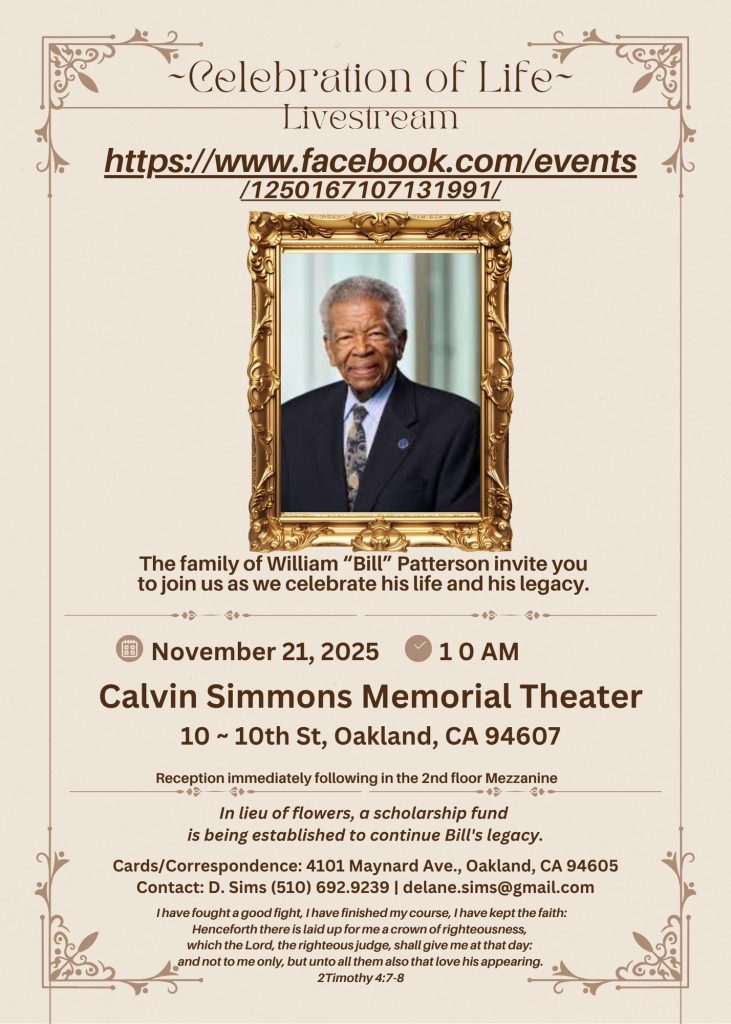
-

 Activism4 weeks ago
Activism4 weeks agoOakland Post: Week of November 12 – 18, 2025
-

 Activism3 weeks ago
Activism3 weeks agoIN MEMORIAM: William ‘Bill’ Patterson, 94
-

 Activism4 weeks ago
Activism4 weeks agoHow Charles R. Drew University Navigated More Than $20 Million in Fed Cuts – Still Prioritizing Students and Community Health
-

 Bay Area4 weeks ago
Bay Area4 weeks agoNo Justice in the Justice System
-

 #NNPA BlackPress3 weeks ago
#NNPA BlackPress3 weeks agoLewis Hamilton set to start LAST in Saturday Night’s Las Vegas Grand Prix
-

 #NNPA BlackPress3 weeks ago
#NNPA BlackPress3 weeks agoBeyoncé and Jay-Z make rare public appearance with Lewis Hamilton at Las Vegas Grand Prix
-

 Activism3 weeks ago
Activism3 weeks agoOakland Post: Week of November 19 – 25, 2025
-

 #NNPA BlackPress4 weeks ago
#NNPA BlackPress4 weeks agoThe Perfumed Hand of Hypocrisy: Trump Hosted Former Terror Suspect While America Condemns a Muslim Mayor

